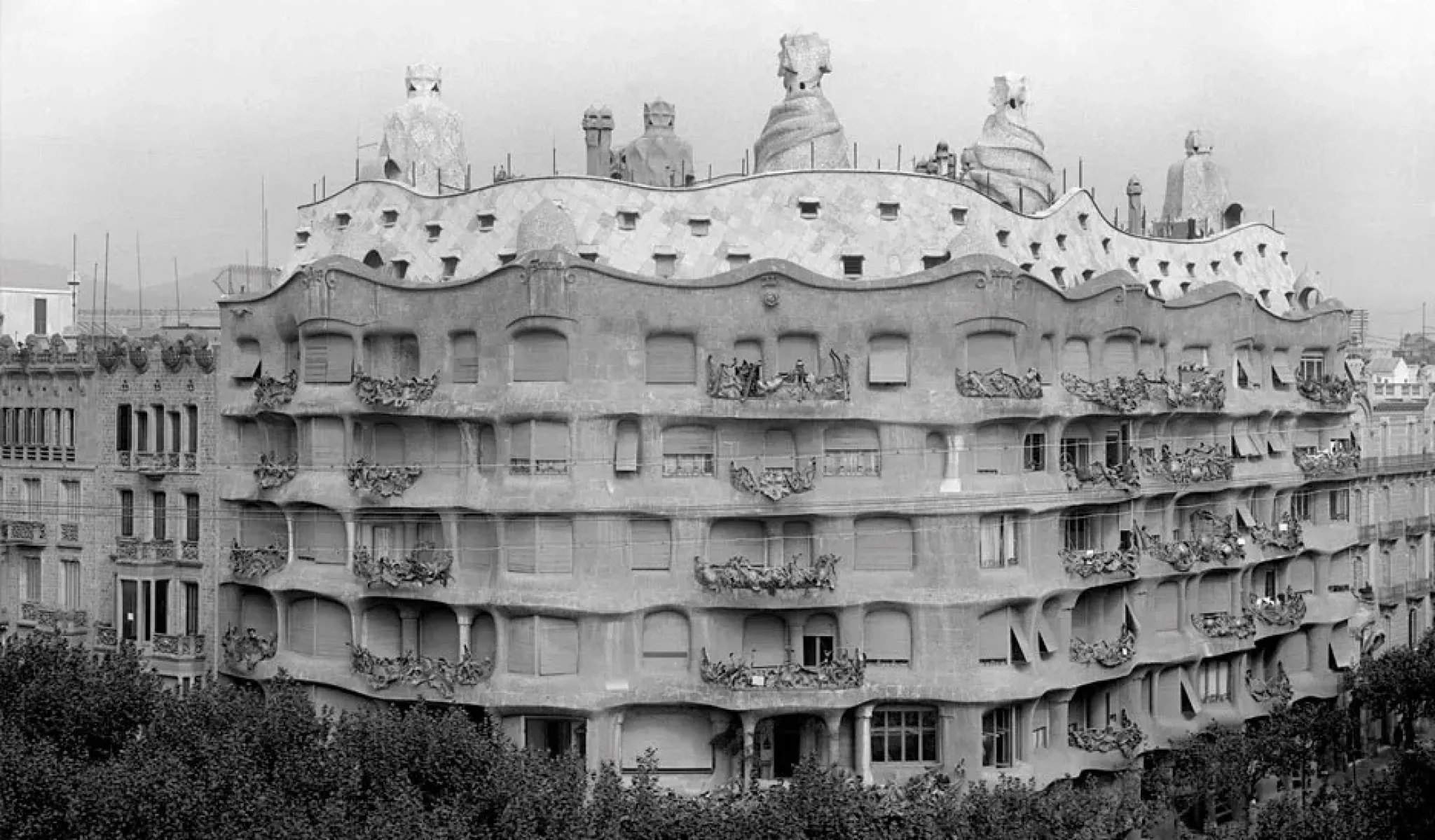
History
In his professional prime, when he had already created his own style and a way of working independent of historical styles, Antoni Gaudí designed Casa Milà (1906-1912), also known as La Pedrera. This would become his last civil work, as well as one of the most innovative in functional, constructive and ornamental aspects.
Princes, diplomats, lawyers, notaries, doctors, textile and automobile businesspeople, actors, artists, journalists, politicians, spies, psychics and military officers have lived in the building.
Appreciation for Gaudí’s work has evolved over time, from controversial and neglected to universally admired, consolidating La Pedrera as a fundamental work of architecture in Barcelona.
“When the building simply has what it needs with the available resources, it has character or it has dignity, which is the same thing.” - Antoni Gaudí